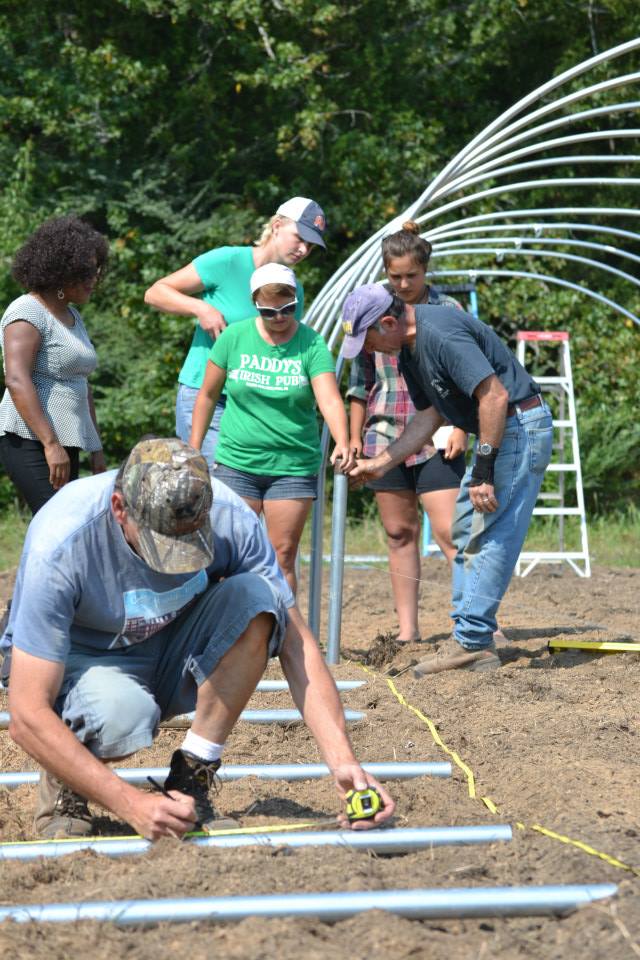
Tara Stainton looked across her nearly three acres of vegetables and flowers on a recent August afternoon and watched as a group of farmers and friends put the finishing touches on a new hoop house structure. Tara, a member of Foodshed Farms CSA, received a grant from Heifer USA to construct the hoop house which will generate additional income by extending her growing season and protecting her crops from inclement weather, foliar disease, and pests. The hoop house is an affordable tool that consists of a lightweight metal frame and a plastic roof with open end walls.
The hoop house will directly contribute to increasing Tara’s productivity while also providing a training opportunity for other farmers. Heifer provides technical guidance on the construction and use of these structures, and Tara will keep records of her crop yields over the next several seasons to share with the rest of the group. This information will help other local farmers with their crop planning and productivity in seasons to come.
The training event also provided an opportunity for other farmers to come together and build social capital. Some farmers traveled over 150 miles to participate in the training and assist Tara with the hoop house construction. One of those farmers, Brandon Gordon of Five Acre Farms in Pleasant Plains, Arkansas, says that hoop houses are a great tool for small farmers like himself because, “In a relatively short amount of time, and with materials obtained locally, a cost-effective tunnel can be constructed and extend the growing season well into the winter.”
Thanks in part to her new hoop house and the increased sales from Foodshed Farms CSA, Tara says she is planting more crops this fall than ever before. She is planting spinach in her hoop house that will go directly into the CSA shares of Foodshed Farms customers in addition to chard, kale, lettuce, and summer squash.
Like many smallholder farmers in the United States, Tara sells through several markets. Working with Heifer through Foodshed Farms has allowed Tara to increase the production of organic vegetables on her farm by investing in greater productive capacity, increasing her access to new markets, and providing a consistent and guaranteed price on her products before they’re even planted.
Story by Ben Maddox